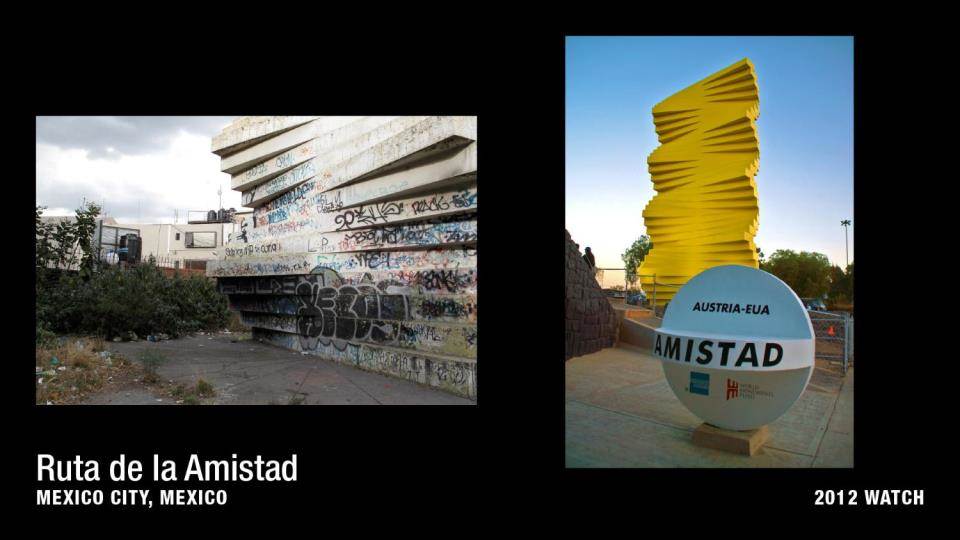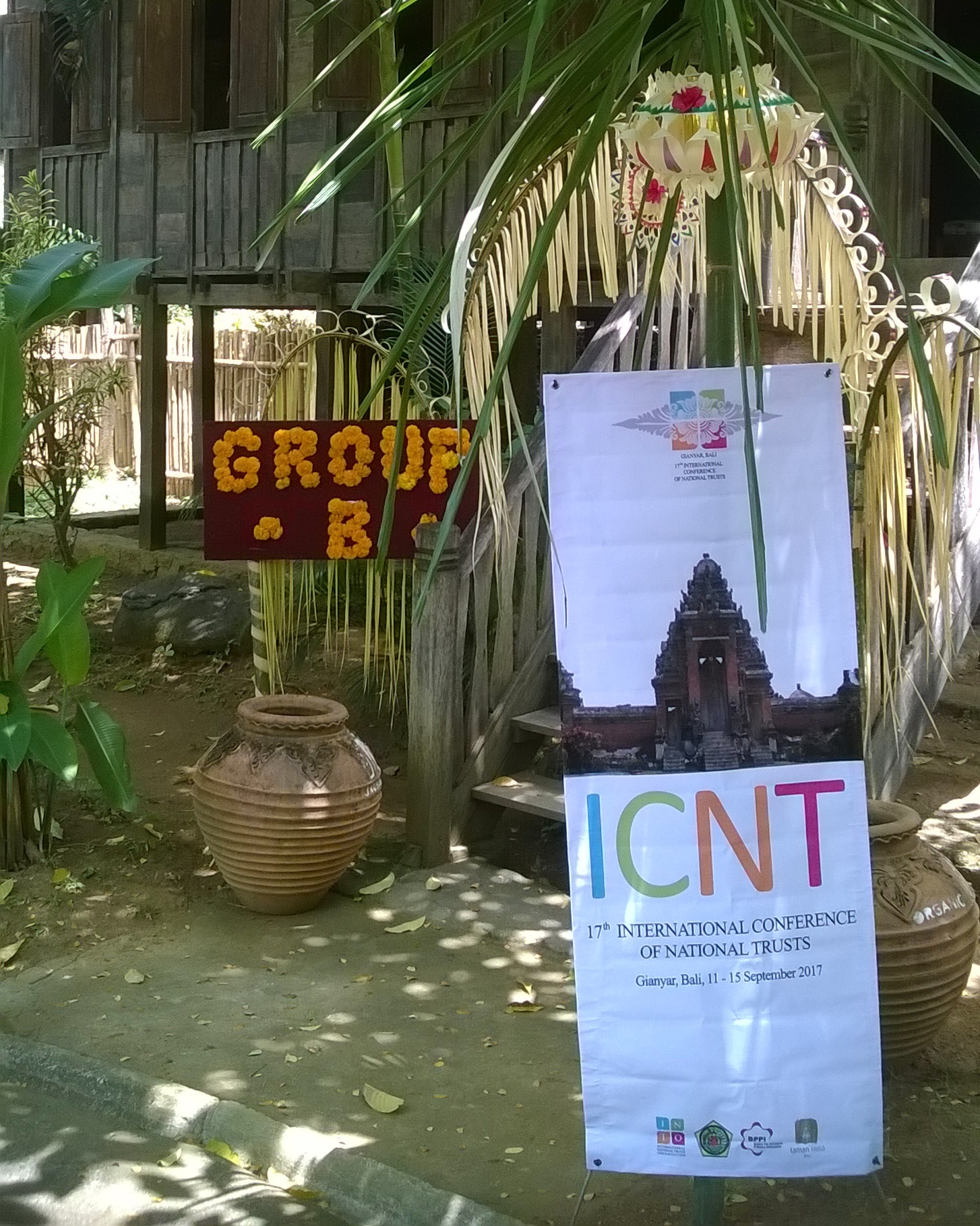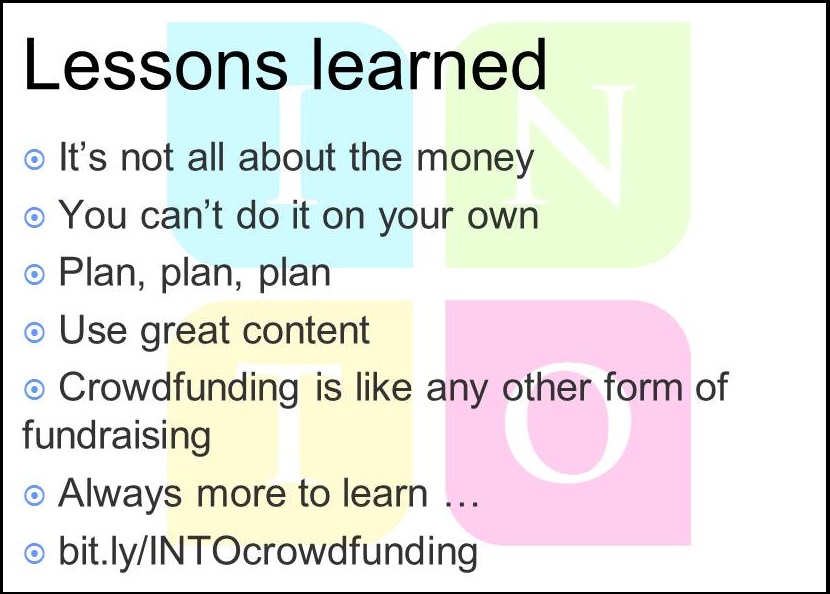-
Funding our future (Weekly blog, 15 October 2017)
Posted on October 15, 2017A blog by Catherine Leonard, Secretary-General
I participated in the “Funding our future: Fundraising for heritage conservation” workshop in Bali. As I got some good feedback on my last blog (Too old and too boring) I thought I’d write a quick post about this.
We met in a small traditional house, reconstructed in the Taman Nusa cultural park. We sat on the floor and later painted paper umbrellas as part of our intangible cultural heritage experience! John de Coninck of the Cross-Cultural Foundation of Uganda kicked off with the immortal words: “You made the right choice of coming to the right group!” (No pressure there then!)

Persuasive personality
First we heard from SK Misra and the Indian Trust for Rural Heritage and Development. The Trust is six years old and finding funding to run it was an early challenge. Given SK’s persuasive nature and excellent high-level personal contacts, he was able to secure eight initial corporate members. Indian law requires companies give 2% of their profits to charity. One of the first tasks was to lobby government so that heritage charities were included on the list of beneficiaries.
Corporate funding and advertising funds the ITRHD’s biannual magazine. The Trust also raises money through fairs and festivals ($56,000 over the last six years). To begin with the Trust did not seek government funding. It sought to establish its credibility first. It then successfully bid for an $800,000 government grant.
Go for broke
Secondly, Bonnie Burnham spoke about the World Monuments Fund and their relationship with American Express through the World Monuments Watch. She reflected that their original modest request for support ($150,000) was unsuccessful. They knew it was a good idea and needed a change of tack. So they rethought the bid and asked for a special $5,000,000 (the amount the Amex Chairman could personally sign off) which was successful! The Watch has been engaging the field and getting worldwide recognition for preservation efforts since 1996. Sites are under threat mostly from lack of resources, development pressures and natural disasters.
 Bonnie honed in on the example of Mexico’s Ruta de la Amistad. A series of sculptures from the 1968 Olympics which were now decaying and had become dislocated from their original contexts.
Bonnie honed in on the example of Mexico’s Ruta de la Amistad. A series of sculptures from the 1968 Olympics which were now decaying and had become dislocated from their original contexts.WMF paid for the restoration of two of the sculptures and published a map, which could be ‘passport’ stamped at each site. In addition, WMF was able to mobilise support from the Bayer Company to undertake paint analysis and Coca-Cola for a bike marathon. Bonnie also highlighted WMF’s collaborations with several INTO member organisations.
Help others to help themselves
Next Natalie Bull of the National Trust for Canada gave her ‘barefoot’ talk! She described how the Trust had reinvented itself having previously been about advocacy and criticising government. It now focusses on programmes that involve people and has found sources of funding to do more projects.
Natalie spoke eloquently about the ‘watering of grass roots’, by which she meant helping others to save special places. She described the impressive ‘Regeneration Works’, a one stop shop for tools and resources. This programme aims to create more successful non-profits and has received government funding for that reason. Some support is free, some paid for (see below).
 She also talked about This Place Matters, an idea ‘stolen with pride’ from the US National Trust! Now in its third year, this is a crowd-sourced competition. Corporate sponsors make funding available, groups put forward projects and people vote for their favourites. The National Trust helps communities to get better at driving traffic to the website to donate or vote. Furthermore, it helps them tell good stories and use video effectively. Last time the pool was $200,000 and $500,000 was raised from the public!
She also talked about This Place Matters, an idea ‘stolen with pride’ from the US National Trust! Now in its third year, this is a crowd-sourced competition. Corporate sponsors make funding available, groups put forward projects and people vote for their favourites. The National Trust helps communities to get better at driving traffic to the website to donate or vote. Furthermore, it helps them tell good stories and use video effectively. Last time the pool was $200,000 and $500,000 was raised from the public!INTO Africa crowdfunder
I was up last and talked about the recent INTO crowdfunder: Encourage African youth to embrace their heritage. Time was tight on the day and so I galloped through it, but it mostly came from an earlier blog which you can read here.
In conclusion my top tips remain that it’s not as easy as you think; neither is it all about the money (it’s as much about engaging people with your work); you can’t do it on your own; plan carefully; use great content; and there’s always more to learn!
A useful discussion ensued. Denis Ricard highlighted the importance of blowing your own trumpet. The Organization of World Heritage Cities was going ‘down the drain’ but they invested in new PR to prove that the organisation was worth funding.
The Taiwan Environmental Information Association explained that they had collected email addresses from the internet. They also hired young people to ask the public to sign up to monthly donations. As a result they now have a list of 20,000 names who give $15,500 a month! Maureen Liebl mentioned the possibility of cultural commerce and museum shops.

Other key messages
- The power of personal contact and persuasion
- Advice from local experts on where to focus activity
- Clever involvement of relevant corporate entities
- Don’t forget how much you know
- Be really intentional – look for initiatives that make a real difference on the ground
- Build capacity – train the next generation to fundraise for heritage
- Make sure you have a diverse board that can help raise your profile and find funding
- Never give up!
Further reading
Bonnie Burnham’s Bali presentation
Catherine Leonard’s Bali presentation
Irena Edward’s Bali presentation (Business planning workshop)

 44 (0)20 7824 7157
44 (0)20 7824 7157